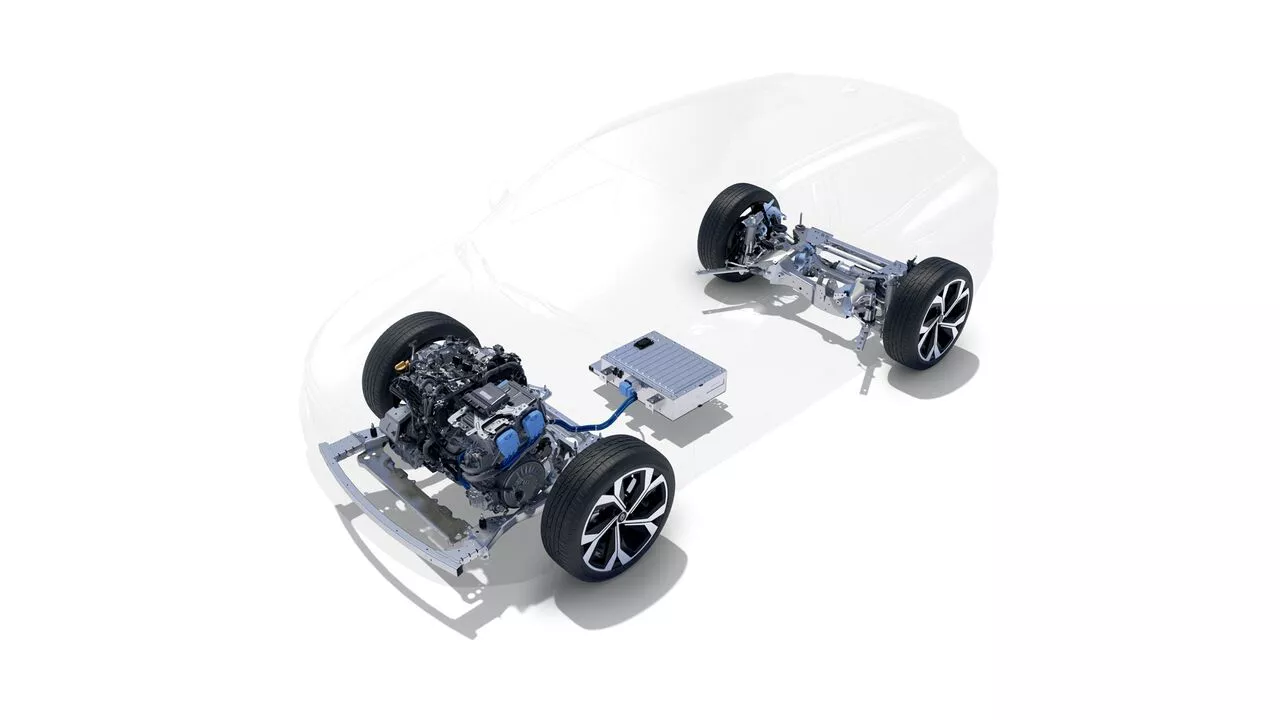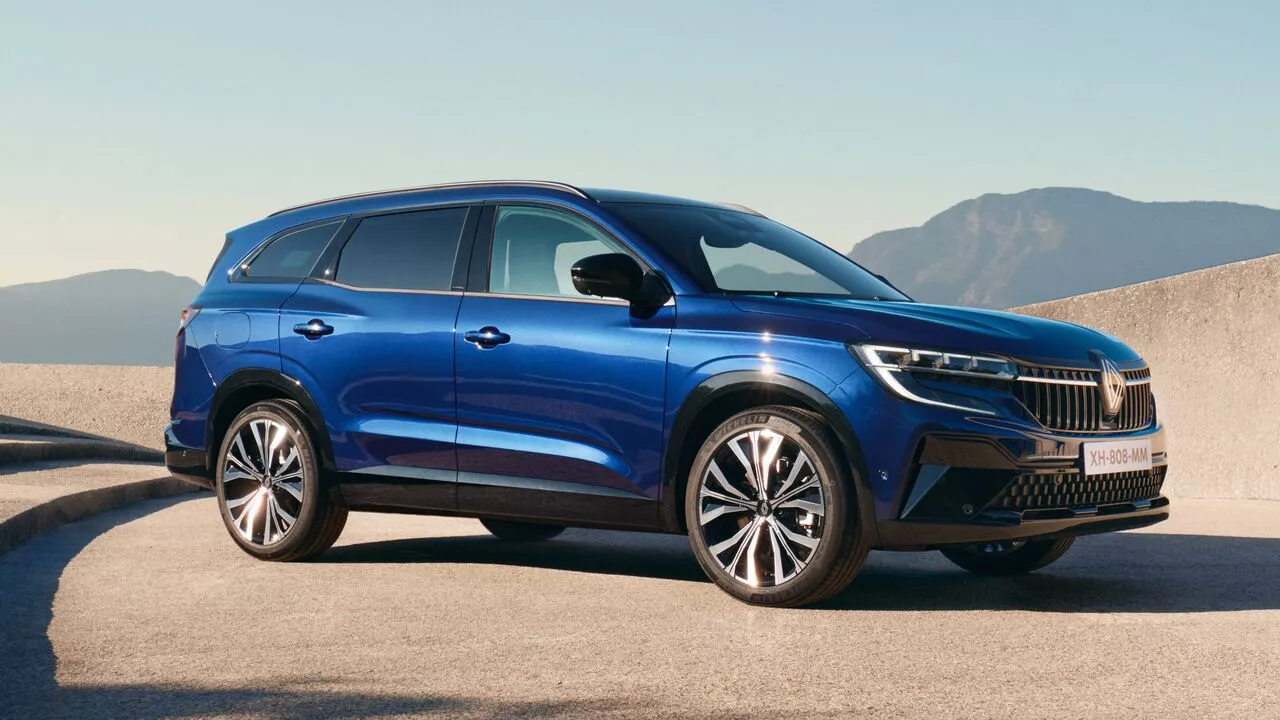HOW DOES A HYBRID CAR WORK?

the principle of E‑Tech hybrid technology
Renault has chosen to develop 2 technologies: E-Tech full hybrid technology for non-plug-in hybrid vehicles, and E-Tech plug-in hybrid for plug-in hybrid vehicles – thus offering economical and ecological vehicles combining driving pleasure and simplicity in everyday life.
Functioning identically, only 2 elements distinguish them:
- the size of their battery and therefore the capacity to drive 100% electric,
- mains charging for E-Tech plug-in hybrid vehicles.
our hybrid engines
They are called “parallel series hybrid”, because they offer the possibility of operating 100% electric, hybrid (electric + thermal) or thermal only
They include 2 electric motors and an additional thermal engine.
The innovative technologies integrated into the car (intelligent gearbox, energy management system, regenerative braking) allow the different engines to take turns or operate simultaneously when necessary. This optimizes the vehicle’s performance and consumption.
E-Tech engines offer great acceleration capacity, dynamic response, reduced CO 2 emissions and fuel consumption.

the different traction modes
A hybrid engine is made up of 2 main motors which take turns or operate simultaneously to provide traction for the vehicle. Discover the different traction modes:
electric traction
When starting, the electric motor drives the wheels alone, so fuel consumption is zero. Always start in silence and drive up to a speed of 130 km/h and up to 5 minutes on electric power depending on your driving style and depending on the model*.
* Austral E-Tech full hybrid 200
hybrid traction
This mode involves the simultaneous use of both energy sources for vehicle traction.
When driving dynamically, the gasoline engine supports the electric to maintain performance. The two engines work together to increase the power of your car. We then speak of parallel hybrid operation.
In certain cases, when the battery is low, the 2 motors work at the same time but only the electric motor ensures driving. In this specific case, the electronic management activates the thermal engine in order to optimize overall consumption and regenerate the battery. We then speak of series hybrid operation.
thermal traction
When the heat engine operates alone, it is called upon at its optimal speed, to drive the vehicle’s wheels and to recharge the battery. The overall consumption of the vehicle is optimized and the additional energy is stored, allowing electric driving to be renewed.
from one pull to the next
You can switch from one traction mode to the other in two ways:
- automatically, via an on-board electronic management system. The system in question analyzes the battery charge level, the acceleration demand, the type of road and adapts the traction mode accordingly, thus making it possible to optimize the vehicle’s performance.
- manually, via the dashboard, only in plug-in hybrid to favor 100% electric.
charging management

the battery of simple hybrid vehicles
recharges only while driving, thanks to kinetic energy. These vehicles do not need connection, because they have an energy recovery system during braking and deceleration. This is enough to fully recharge the battery.

the battery of plug-in hybrid vehicles
recharges mainly by plugging the vehicle into the mains, but also while driving (around 10% of the possible recharge). Plug-in hybrid vehicles have an additional hatch that allows the battery to be fully recharged.
the Renault E-Tech full hybrid range

E-Tech full hybrid
Vehicles made up of 2 electric motors and a thermal engine, which recharge while driving and allow you to drive 100% electric up to 80% of the time (urban WLTP cycle).
your questions about how hybrid cars work
The alternation between electric, hybrid and thermal traction is managed automatically by the vehicle, via an on-board electronic system. This takes into account three criteria, to offer the best compromise between performance and consumption:
- requesting pressure on the accelerator pedal;
- the profile of the road on which you are driving;
- the state of charge of the battery.
Clearly, during start-up, stabilized driving and normal acceleration, the hybrid car uses only the electric motor. If greater pressure is exerted on the accelerator pedal, if the terrain requires more power (for example, in the case of a steep climb) or if the battery is no longer sufficiently charged, the vehicle calls upon the heat engine. The latter will, depending on the case, supplement the electric motor (hybrid traction) or completely replace it (thermal traction).
No, that’s not possible.
A hybrid car continues to drive even when its traction battery is discharged, thanks to the thermal engine. On the other hand, the opposite cannot work: the hybrid and electric traction modes are there to work alternately with the thermal mode, but not to completely replace it. If the hybrid car runs out of fuel, the other traction modes will only be able to take over briefly before breaking down.
The electric battery is not constantly used, since the vehicle also operates with a thermal engine. Battery wear is therefore very gradual and does not cause a loss of capacity sufficient to hamper the operation of the vehicle.
In addition, if we protect the battery from extreme temperatures, particularly cold, it can last until the end of the hybrid vehicle’s life.
Furthermore, the traction battery of a Renault hybrid vehicle is guaranteed for 8 years or 160,000 km.

